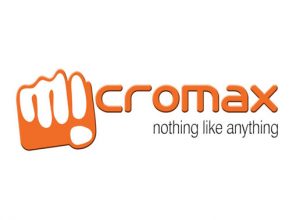Without a doubt, analysts expected a handful of major announcements from Google’s September 29 event. The company didn’t disappoint, announcing two new Nexus smartphones and an updated Chromecast device. A companion audio device for the Chromecast was thrown in for good measure. Likewise, new details were revealed about Android 6.0 Marshmallow, the follow-up to last year’s Android 5.0 Lollipop.
Aside from the Nexus 5X and 6P, one device stood out from the pack: the Google Pixel C. The rumor mill singled out this tablet a few days before the September 29 event. Nobody was 100% sure that it would be announced, though. However, Google made the Pixel C official in the middle of its media event, and it was an interesting reveal. A few features set this Android-powered tablet apart from other Android-based tablets.
Hardware And Software Specs
The Pixel C features a 10.2-inch touchscreen with a 2560×1800-pixel resolution. Of course, that amounts to a crisp and clear 308 pixels per inch. An Nvidia Tegra X1 processor is coupled with 3GB of RAM to deliver impressive performance. USB Type-C comes standard here, which is unsurprising considering the latest Chromebook Pixel’s use of the connector. Like the Chromebook, this device features a metal build.
With the Pixel name, this tablet should run Chrome OS, right? Well, wrong. The Pixel C runs Android 6.0 Marshmallow out of the box. Google’s newest mobile operating system comes with performance and battery improvements as well as updates to Material Design. For most users, Marshmallow will look quite similar to Lollipop. Subtle changes to the operating system make it smoother and more efficient for mobile devices.
What sets the Pixel C apart from other Android tablets?
Google didn’t manufacture a simple tablet with high-end specs. The Pixel C features a keyboard peripheral for multitasking and productivity. Unfortunately, it’s sold separately from the tablet, but let’s ignore that. Magnets attach the keyboard to the tablet, and no kickstand is required to prop the tablet on the keyboard. The Pixel C actually recognizes when the keyboard is being used and adjusts accordingly.
Oh, and the keyboard peripheral charges inductively while attach to the Pixel C.
Pricing Information
A premium build and powerful hardware immediately indicate a premium price for the Pixel C. For the 32GB version, consumers will have to pay $499, and 64GB of internal memory boosts the price to $599. Something that could irk consumers is the fact that the keyboard is sold separately at a hefty price of $149. A total of $648 is the minimum cost of entry for users looking to use the Pixel C to its fullest potential.
Then again, there’s a big reason why the Pixel C is priced in this manner…
Microsoft Surface Pro, Apple iPad Pro…Google Pixel C?
Google has created its high-end tablet to compete with the best offerings from Microsoft and Apple. Microsoft’s Surface Pro 3 hit the market in June 2014, and a Surface Pro 4 is expected soon. On the other hand, Apple recently announced the iPad Pro, which is a larger iPad in essence. All three devices feature a powerful tablet and a keyboard peripheral sold separately. Google is ready to battle with competitors.
Pixel C: An Interesting Device That Undercuts The Competition
Unlike the Nexus line, which is created in partnership with a hardware manufacturer, the Pixel C comes in-house from Google. This shows an extra level of dedication to the device from Google’s development team. It’s expensive for a tablet, but the Pixel C undercuts the best offerings from Microsoft and Apple price-wise. Perhaps this is an attempt to duke it out with Apple more so than Microsoft.
Either way, the Pixel C will arrive before the holiday shopping season this year!





Be First to Comment